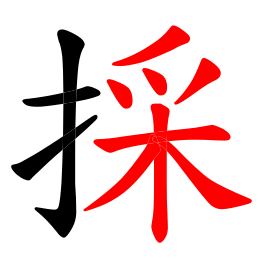How to translate Chinese and Japanese characters
February 6, 2012
I'm in an Iron Blogger "competition" and per the rules I have to update the blog once a week. I've been a bit lax, so I've dug this up from my collection of articles I wrote for my now famously vaporware newsletter (vol 2 will come and the meek shall inherit). Enjoy!
 Hanzi Smatter1 is great, but sometimes you don't want to rely on a random blog to translate your friends' crappy tattoos. Or maybe you wanna know what that anime's title REALLY means. Wonder no more! For a history lesson as well as a lot of information I'm just going to skip that could be important for translating larger texts (such as reading direction), there are links at the bottom of this section. For simplicity's sake I'm going to refer to all these characters as Hanzi2 (Kanji3 being the Japanese pronunciation of the same characters). There are also a lot of nuances to the radicals, their ordering, and non-radical elements of these characters that I'm gonna ignore for the same of simplicity.
Hanzi Smatter1 is great, but sometimes you don't want to rely on a random blog to translate your friends' crappy tattoos. Or maybe you wanna know what that anime's title REALLY means. Wonder no more! For a history lesson as well as a lot of information I'm just going to skip that could be important for translating larger texts (such as reading direction), there are links at the bottom of this section. For simplicity's sake I'm going to refer to all these characters as Hanzi2 (Kanji3 being the Japanese pronunciation of the same characters). There are also a lot of nuances to the radicals, their ordering, and non-radical elements of these characters that I'm gonna ignore for the same of simplicity.
The key to being able to decipher these characters is understanding how they are constructed. Although some look quite complex and monolithic, all Hanzi are constructed from building blocks called radicals4. Each radical consists of a particular number of strokes required to draw it and Chinese dictionaries are usually ordered by the increasing number of strokes (there are several other orderings, including ones based on semantic categorization, a tradition descended from the ancient Chinese dictionary the Erya). Computerized radical-based dictionaries offer significantly faster lookups, because you can drill-down to the characters you mean quite quickly.
- Go to http://www.cojak.org. There are other Hanzi/Kanji dictionaries out there, but that one's decent and pretty
- Try and identify a simple "monolithic" structure within the character, and count its number of strokes. Until you become more familiar with the radicals you may miscount, though thankfuly the dictionary's interface lets you just find the radical that looks most similar. The location of the radical within the character varies, it's meant to represent the core "semantic" aspect of the word, but that isn't universally true.
- Click on that radical!
- Now you will be presented with choices of embellishments upon that radical, again ordered by number of strokes. Your character should be amongst the list.
- Now you will see the definition of that character. Below you may see a list of words that begin with that character, but are made up of multiple ones. If the character you are trying to translate is within a longer text, see if the adjacent characters don't match those in the list, because words can be made up of multiple characters
- Voila! With a little bit of pattern recognition, you've now got the tools to be translating most Hanzi without much difficulty.
Almost underwhelming isn't it? Unfamiliar things can often seem daunting, especially foreign languages and writing systems. Even a little bit of knowledge, however, can go a long way towards demistifying large swathes of territory! One weekend I was waiting for a train at the Mountain View Caltrain station, when an elderly Chinese couple began speaking at me in animated Mandarin and gesturing at the ticket machine. I tried to help them buy tickets, but they waved me away. I don't speak any Chinese, but I am familiar with various cultural elements such as Laozi5 (a.k.a Lao-Tzu, etc.) father of Taoism whose name simply means "old master". As the woman spoke to me, I noticed the word "lao" coming up multiple times. I asked "lao?", to which she nodded vigorously and repeated "lao! lao!". So, I helped them get the Senior-priced tickets on the machine and they left happily.
Without resorting to universal hand gestures, the cross-linguistic issues were resolved! The important thing is to always try and apply even tiny bits of pattern recognition, you never know when it will be quite helpful.
Notes & References:
1 Hanzi Smatter
2 Hanzi - Wikipedia
3 Kanji - Wikipedia
4 Radical (Chinese Character) - Wikipedia
5 Laozi - Wikipedia